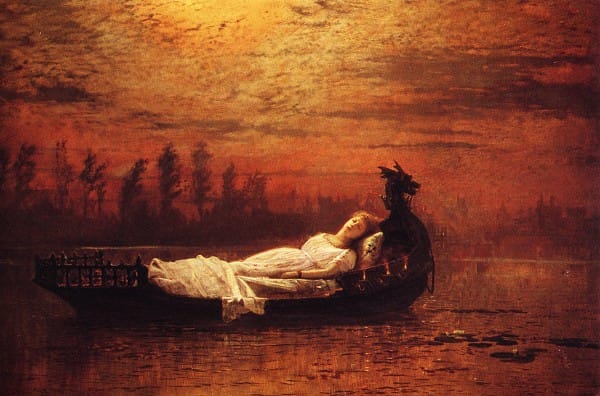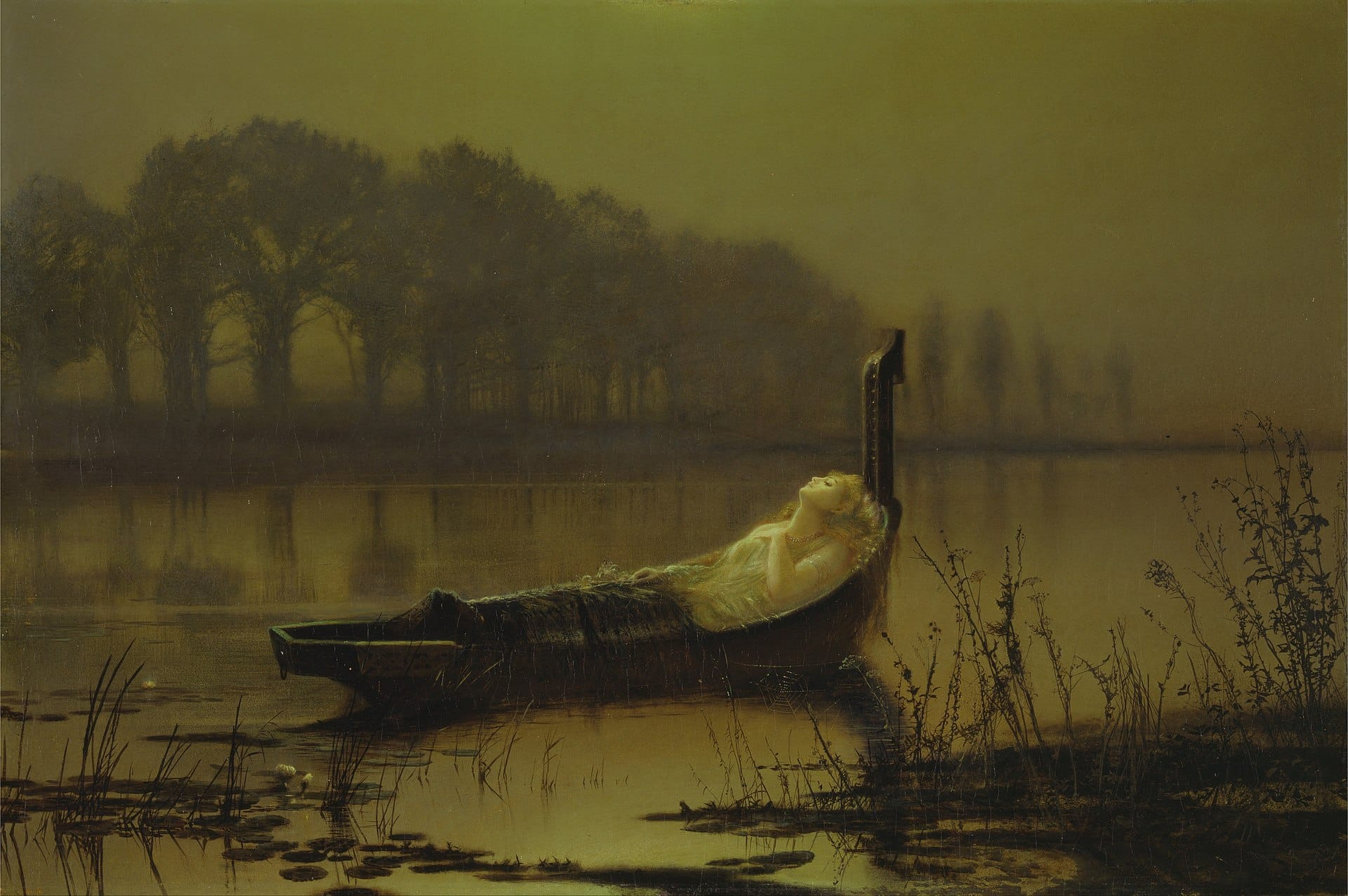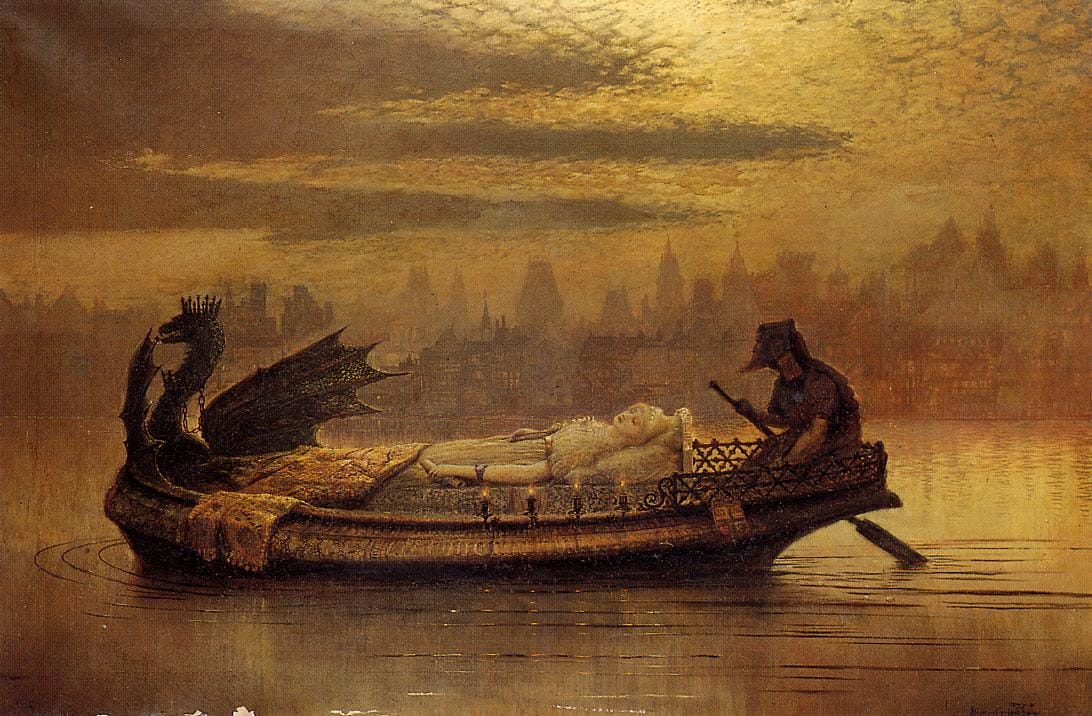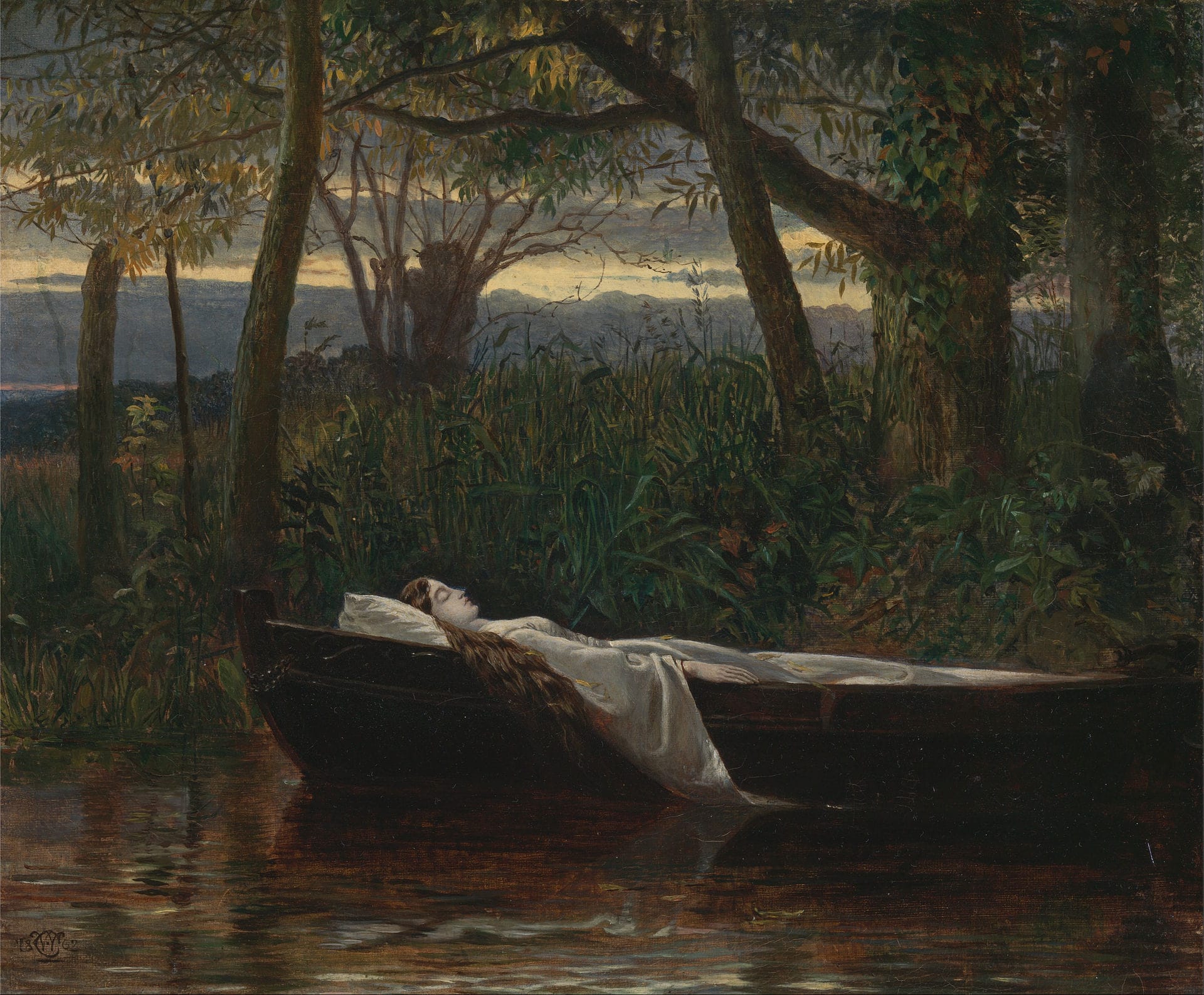'The Lady of Shalott'

Rosamond was always a tender domestic image, a doomed image. Tennyson may have had something like this in mind when he wrote the poem, The Lady of Shalott (1842), where his heroine tires of life in the nunnery and goes out into the world to experience her carnality and mortality. She knows she will die for love. In that sense it reverses the story of Rosamond, who starts off as a prisoner of love inside the bower and who retreats into the nunnery in the hope of saving her immortal soul. The Lady of Shalott, even today, is a perfect metaphor for protected young women leaving high school or college or a closed society and embarking on life’s sexual misadventures. More images here.
The Lady of Shalott below is from around 1875 by Victorian painter John Atkinson Grimshaw, whose mastery of autumnal and twilight scenes I have always found impressive. He lived and painted mostly in Leeds and Scarborough and he died in 1893.

The paintings up top and below are also by Grimshaw.

Finally, a version by Walter Crane from 1862.

